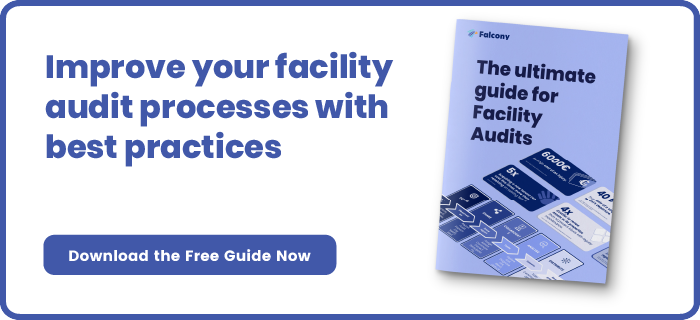The Golden Six of Maintenance Strategies
In the ever-evolving landscape of industrial operations and facility management, maintenance strategies are pivotal in ensuring the optimal performance, safety, and longevity of equipment and infrastructure.
With advancements in technology and a growing emphasis on efficiency, organisations are increasingly seeking refined and effective approaches to maintenance. The Golden Six maintenance strategies offer a robust framework for achieving these objectives. In this blog, we will explore these six strategies, elucidate their benefits, and discuss how they can be integrated into a cohesive maintenance programme.
Preventive Maintenance
Preventive maintenance involves regular, scheduled inspections and servicing of equipment to prevent unexpected breakdowns and prolong its life. By adhering to a predetermined schedule, organisations can address potential issues before they escalate into significant problems. This strategy often includes tasks such as lubrication, cleaning, and part replacements.
Benefits:
- Reduces the likelihood of unplanned downtime.
- Enhances the overall reliability and efficiency of equipment.
- Helps in budgeting for maintenance costs by spreading expenses over time.
Implementation Tips:
- Develop a detailed maintenance schedule based on manufacturer recommendations and historical data.
- Utilise a Computerised Maintenance Management System (CMMS) to track and manage tasks.
Predictive Maintenance
Predictive maintenance leverages data and advanced technologies to forecast when equipment is likely to fail. By monitoring equipment conditions in real-time using sensors and diagnostic tools, organisations can perform maintenance just before a failure is predicted to occur. This approach aims to optimise maintenance activities based on the actual condition of equipment rather than on a fixed schedule.
Benefits:
- Minimises unnecessary maintenance tasks.
- Reduces downtime by addressing issues before they cause failures.
- Enhances resource allocation by focusing efforts on equipment nearing failure.
Implementation Tips:
- Invest in condition monitoring technologies and integrate them with your maintenance strategy.
- Train staff to interpret data and make informed maintenance decisions.
Corrective Maintenance
Corrective maintenance involves repairing or replacing equipment after a failure or defect has occurred. This reactive approach is typically employed when preventive or predictive measures have not been implemented or have been insufficient.
Benefits:
- May be cost-effective if the failure is infrequent and the consequences of downtime are manageable.
- Provides valuable insights into the failure modes and potential improvements for future maintenance strategies.
Implementation Tips:
- Maintain a detailed log of failures and repairs to identify recurring issues and areas for improvement.
- Develop a contingency plan to address the impact of unexpected downtime.
Reliability-Centred Maintenance (RCM)
Reliability-Centred Maintenance (RCM) is a systematic approach that evaluates the reliability of each component within a system. The objective is to determine the most effective maintenance strategies based on the criticality of each component and the potential consequences of its failure.
Benefits:
- Aligns maintenance activities with organisational goals and risk management strategies.
- Optimises resource allocation by focusing on components that are critical to operational success.
- Enhances overall system reliability and performance.
Implementation Tips:
- Conduct a thorough analysis of system functions and failure modes.
- Engage cross-functional teams to ensure comprehensive evaluation and buy-in.
Total Productive Maintenance (TPM)
Total Productive Maintenance (TPM) is a holistic approach that involves the entire organisation in maintaining equipment. It emphasises proactive and preventive maintenance with a focus on maximising equipment effectiveness through employee involvement and continuous improvement.
Benefits:
- Fosters a culture of shared responsibility for equipment maintenance.
- Improves overall equipment effectiveness (OEE) by addressing losses due to downtime, speed reduction, and quality defects.
- Encourages continuous improvement and employee involvement.
Implementation Tips:
- Establish TPM teams and provide training to empower employees at all levels.
- Set clear objectives and performance metrics to track progress and success.
Risk-Based Maintenance
Risk-Based Maintenance prioritises maintenance activities based on the risk associated with equipment failure. This approach assesses the potential impact of failures on safety, production, and financial outcomes, focusing resources on the most critical assets.
Benefits:
- Ensures that maintenance efforts are aligned with the potential consequences of failure.
- Helps in managing and mitigating risks effectively.
- Supports informed decision-making by quantifying the risk associated with different assets.
Implementation Tips:
- Perform risk assessments to identify critical assets and potential failure impacts.
- Develop a risk management plan that outlines maintenance priorities and resource allocation.
Conclusion
The Golden Six maintenance strategies offer a comprehensive suite of approaches to enhance the effectiveness of maintenance programmes. By integrating these strategies, organisations can achieve a balanced approach that combines preventive measures, predictive insights, corrective actions, and a focus on reliability, productivity, and risk management. Adopting these strategies not only improves operational efficiency but also contributes to long-term success by fostering a culture of continuous improvement and proactive maintenance.
In a landscape where downtime and equipment failures can significantly impact operational performance and profitability, embracing the Golden Six can provide a competitive edge and ensure that maintenance practices are both strategic and effective.
Are you looking for a tool to enable, record and monitor RCM or other quality processes in your organisation? Falcony | Platform ticks all the boxes for reporting, investigation management, is easy to customise, enables real dialogue and is a lot more.
We are building the world's first operational involvement platform. Our mission is to make the process of finding, sharing, fixing and learning from issues and observations as easy as thinking about them and as rewarding as being remembered for them.
By doing this, we are making work more meaningful for all parties involved.
More information at falcony.io.

Related posts
Optimizing Shopping Center Operations with RBM
Maintaining the operational efficiency and safety of shopping centers is paramount in ensuring a...
What is Risk-Based Maintenance (RBM)?
In the world of industrial operations and asset management, maintaining equipment and machinery is...
Reliability-Centered Maintenance (RCM) in Amusement Parks
Amusement parks are synonymous with joy, excitement, and unforgettable memories. Behind the scenes,...





